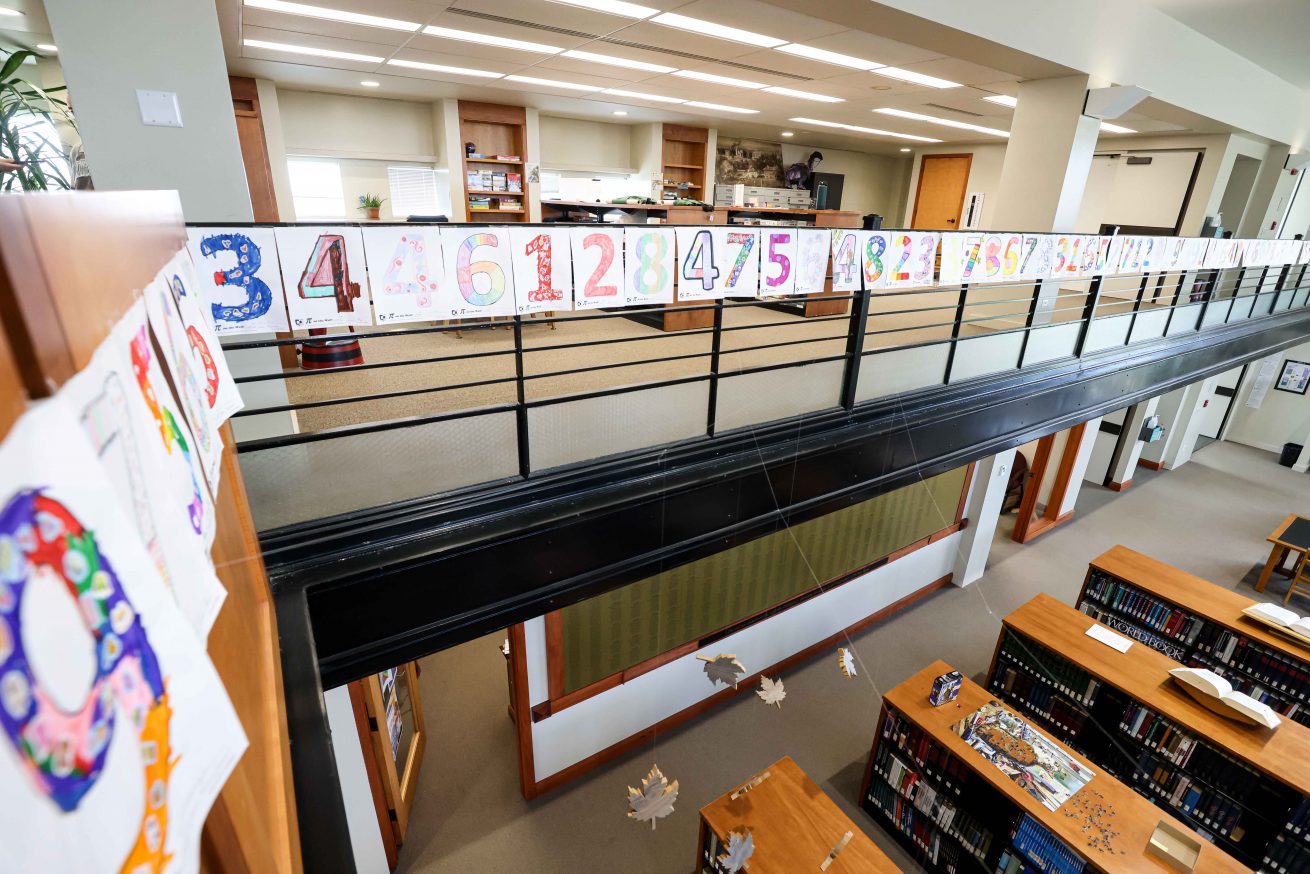
Pi on the Wall in Cole Library
If you’ve been in Cornell College’s Cole Library since March 14, you may have noticed that it’s looking a bit more … mathematical.
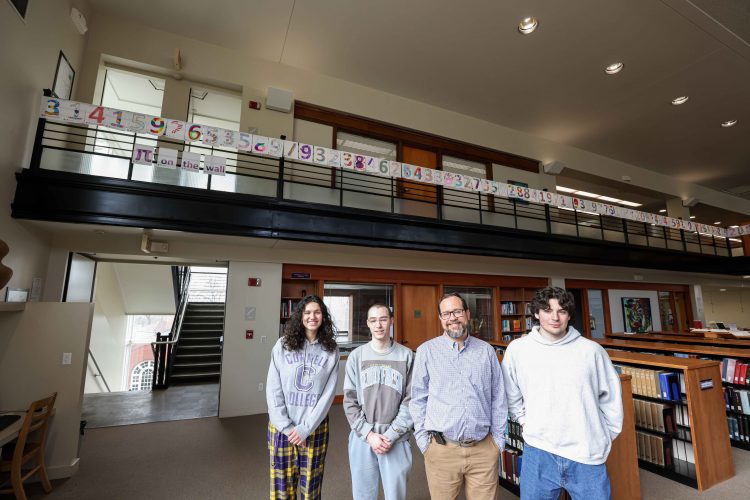
Starting on Pi Day, March 14 (a date that, written numerically, is the first three digits of pi) a team of students and Associate Professor of Mathematics and Statistics Fabián Candelaria started putting up digits of pi.
Two weeks later they finished, and they didn’t just do 10 or 20 or even 50 digits.
They did 290.
The numbers fill the entirety of the third-floor balcony in Cole Library.
“We measured twice,” Candelaria said with a laugh.
Max Cahoon, a sophomore math major from Illinois, helped measure to make sure every number was in the correct place and that they would all fit right where they needed to go. The team placed the digits as they received them.
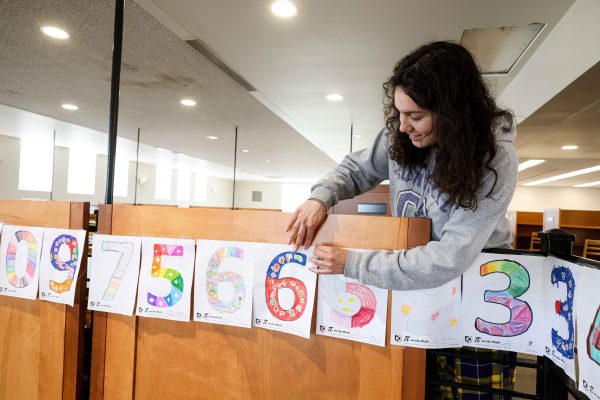
“It’s cool how visible it is. Everyone gets to see it and how cool math is and everyone’s different artistic style,” Cahoon said. “I think a lot of people are scared of math. It seems complicated. But this makes it seem more accessible.”
The digits all look different. They’re colored, printed, and decorated by Cornell students, Cornell faculty and staff, and community members. Dozens of students from Mount Vernon, Lisbon, and Linn-Mar elementary schools also created them.
“People saw the numbers differently, different designs, so that was cool to see,” said sophomore Marley Gillespie, a math major from Minnesota who helped with the project.
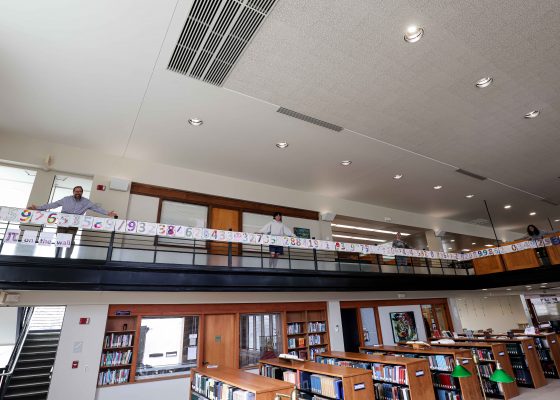
There’s also one digit colored by a student in New York and a few by students in Puerto Rico, where Candelaria is from.
“I want my students here at Cornell to see that we can have math as a tool in a very different way, it can be something that gets the community together,” Candelaria said. “This project also exposes others to the beauty of math.”
Candelaria taught at Cornell from 2005–2007 as a visiting faculty member, and this has been his first year teaching since his return to the Hilltop this fall. He says he’s been doing Pi on the Wall since 2016 in other locations and is excited to bring it to Cornell.
Junior math major Andy Stewart is from Virginia and plans to get his master’s degree in math. He volunteered his time to help with the Pi on the Wall exhibit.
“It thought it was cool to be part of something like this,” Stewart said. “It’s cool to have it up, and I think it’s a good way to destigmatize math education.”
So, what is Pi?
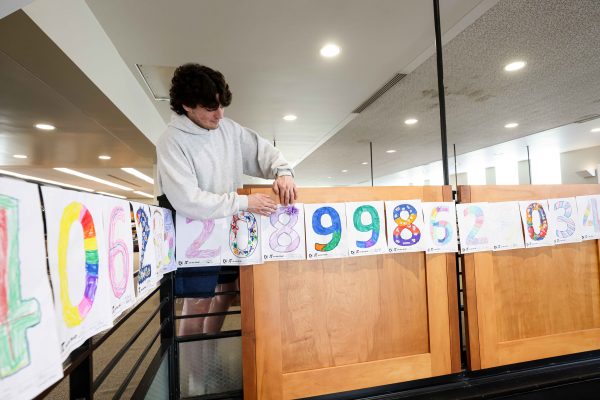
Pi is a mathematical constant, and as a ratio, pi is equal to the circumference of a circle divided by the diameter. This produces what’s called an irrational number. It continues without end.
“Pi is very weird and interesting,” Candelaria said. “It’s a never-repeating sequence. It’s not that its digits are random. They are not random, they follow a pattern, but the pattern never repeats. That’s the beauty of irrational numbers, and it’s a nice representation of something that is so real and, yet, irrational at the same time.”
It’s a project that exhibits individuality and community, irrational and real, math and art–all very different things, maybe even seemingly opposite, working together to create this unique display.
“Every time I’d pull a digit out to put up, I’d look at how somebody expressed a number, sometimes using the whole number, sometimes using a combination of negative space, and I would be reminded how students and people are so creative,” Candelaria said. “Making art is calming and good, and I really enjoyed putting them up there for everyone to see.”
The exhibit will remain up through the end of April–Mathematics and Statistics Awareness Month. The month, which began in 1986 with a proclamation by President Ronald Reagan, aims to increase public understanding of math and increase the visibility of math and statistics as a field of study.
And just like the digits of pi are never-ending. This isn’t the end of this project.
Candelaria hopes to expand this project next year and include artwork by schools in India, through collaboration with another faculty member during an off-campus course.
How many digits do you think they’ll include next year?



